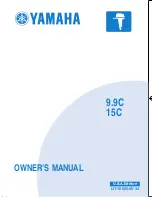S32R274/372 EVB User Guide
by : NXP Semiconductors
1. Introduction
This user guide details the setup and configuration of the
NXP S32R274/372 Evaluation Board (hereafter referred
to as the EVB). The EVB is intended to provide a
mechanism for easy customer evaluation of the S32Rxx
family of microprocessors, and to facilitate hardware and
software development.
At the time of writing this document, the S32Rxx family
form the basis of the RADAR specific 55nm devices. For
the latest product information, please speak to your NXP
representative or consult the S32Rxx at
www.nxp.com
.
The EVB is intended for bench / laboratory use and has
been designed using normal temperature specified
components (+70°C).
1.1. List of acronyms
Table 1 provides a list and description of acronyms used
throughout this document.
NXP Semiconductors
Document Number: S32R274/372EVBUG
User Guide
Rev. 0 , 08/2018
Contents
1.
Introduction ........................................................................ 1
1.1.
List of Acronyms .................................................... 1
1.2.
Modular Concept .................................................... 2
1.3.
Daughter Card Availability ..................................... 3
2.
EVB Features ..................................................................... 3
3.
Configuration ..................................................................... 5
3.1.
Power Supply Configuration ................................... 5
3.2.
CAN Configuration ................................................. 8
3.3.
RS232 Configuration .............................................. 9
3.4.
LIN Configuration ................................................ 10
3.5.
FlexRAY Configuration ........................................ 11
3.6.
Ethernet Configuration .......................................... 12
3.7.
Motherboard.......................................................... 12
4.
Configuration – Daughter card ......................................... 14
4.1.
MCU Power .......................................................... 15
4.2.
Reset Circuit ......................................................... 17
4.3.
MCU External Clock Circuit ................................ 18
4.4.
JTAG .................................................................... 19
4.5.
Nexus Aurora ........................................................ 20
4.6.
Serial Interprocessor Interface (SIPI) .................... 20
4.7.
Camera Serial Interface (MIPI-CSI2) ................... 21
4.8.
Gigabit Ethernet .................................................... 21
4.9.
CAN FD ................................................................ 23
4.10.
Test Points - Daughter Card .................................. 24
4.11.
Configuring the Daughter Card for Standalone Use25
4.12.
Configuring External VREG Mode ....................... 25
4.13.
Configuring Internal VREG Mode ........................ 26
5.
Board Interface Connector ............................................... 27
6.
Default Jumper Summary Table ...................................... 35
6.1.
Default Jumper Table - Motherboard .................... 35
6.2.
User Area .............................................................. 38
6.3.
Known Issues ........................................................ 38
Summary of Contents for S32R274
Page 39: ......

















